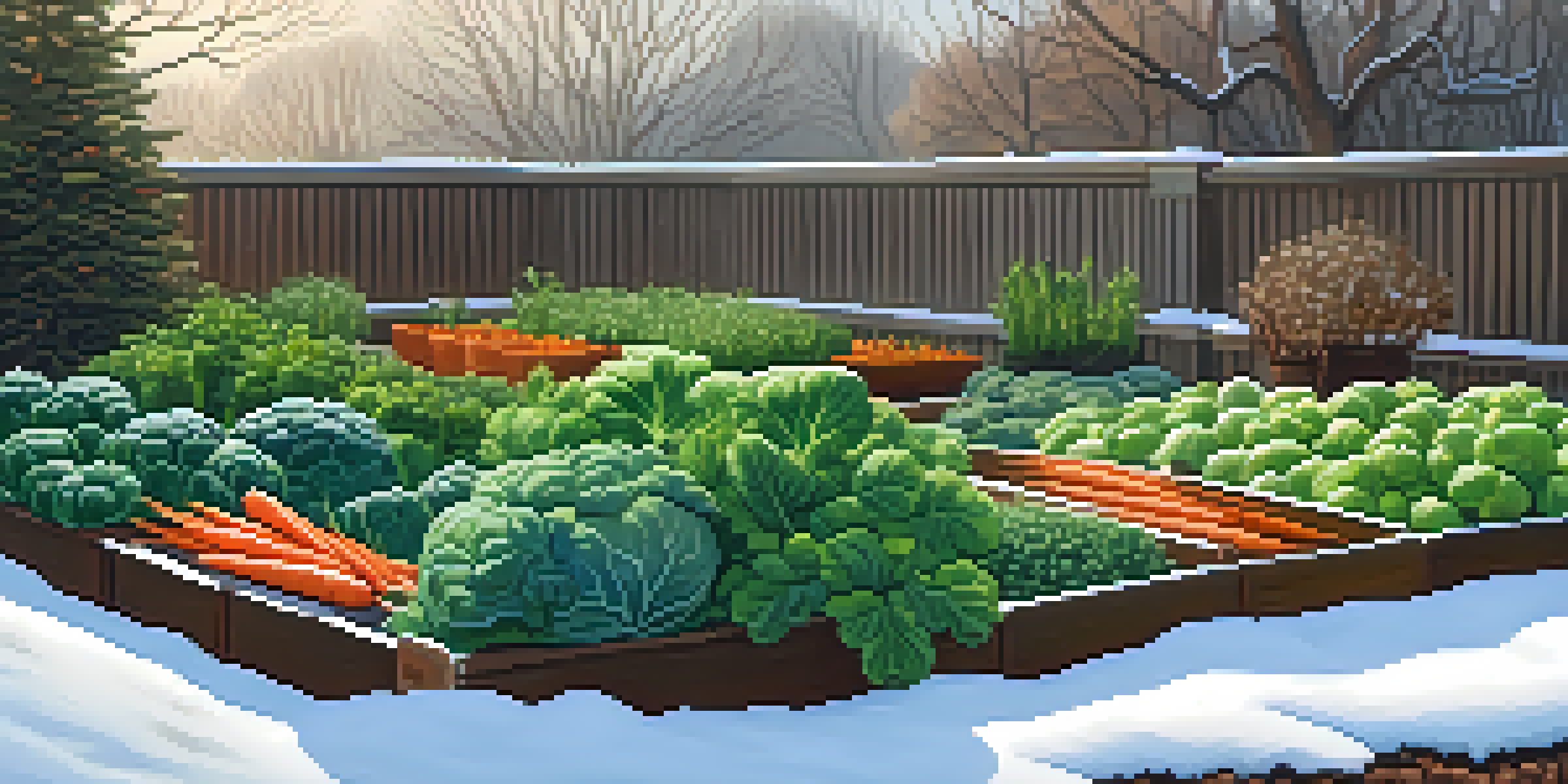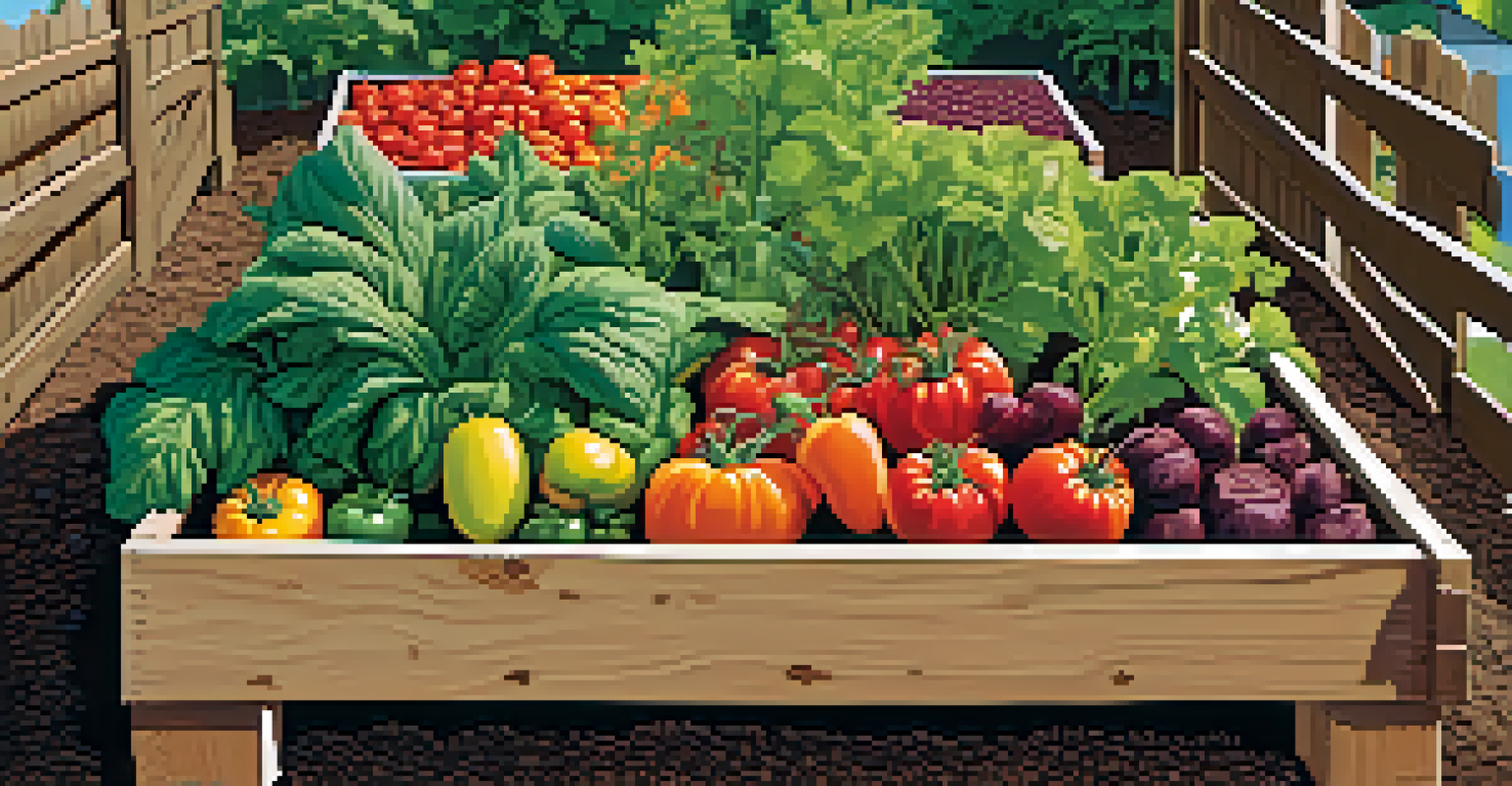How to Extend Your Gardening Season in Cold Climates Effectively

Understanding Your Cold Climate Zone for Gardening
Gardening in cold climates requires a solid understanding of your specific USDA hardiness zone. These zones help you identify which plants will thrive in your region's temperatures. For instance, zones 3 and 4 experience harsher winters than zones 5 or 6, so knowing your zone can guide your plant selection.
To plant a garden is to believe in tomorrow.
Once you know your zone, you can choose plants that not only survive but also flourish in your climate. Cold-hardy vegetables like kale and Brussels sprouts are great options for cooler areas. This knowledge allows you to make better decisions about when to plant and what varieties to choose, setting the stage for a successful gardening season.
Additionally, understanding your local climate's unique characteristics, such as frost dates and rainfall patterns, can help you plan effectively. For example, some areas may experience late spring frosts, which can kill young plants. By being aware of these factors, you can better prepare your garden for success.
Choosing the Right Cold-Hardy Plants
Selecting the right plants is crucial for extending your gardening season in cold climates. Cold-hardy varieties are designed to withstand lower temperatures and can often be planted earlier in the spring and later into the fall. Some excellent choices include root vegetables like carrots and beets, which can be harvested even after a frost.

In addition to root vegetables, consider incorporating hardy greens like spinach and Swiss chard into your garden. These plants not only thrive in cooler temperatures but also provide nutritious harvests throughout the season. By diversifying your plant choices, you can maximize your yield even in colder months.
Know Your Cold Climate Zone
Understanding your USDA hardiness zone helps you select the right plants that will thrive in your region's temperatures.
Furthermore, experimenting with native plants can be beneficial. Native species are often well-adapted to local conditions, making them more resilient to cold weather. By focusing on these varieties, you can create a garden that not only lasts longer but also supports local ecosystems.
Utilizing Season Extenders Like Cold Frames
Cold frames are an excellent tool for gardeners in cold climates, acting as mini-greenhouses that provide protection against the elements. These structures trap heat from the sun, creating a warmer environment for your plants. By using cold frames, you can start seedlings earlier in spring and extend your harvest into fall.
Gardening is a way of showing that you believe in tomorrow.
Building a cold frame is relatively simple and can be done using materials like old windows or clear plastic sheeting. Position it in a sunny spot to maximize warmth and light for your plants. This investment can significantly lengthen your gardening season without requiring extensive resources.
In addition to cold frames, consider using row covers, which are lightweight fabrics that insulate plants while allowing sunlight and moisture to penetrate. Row covers can protect your crops from frost and pests, extending their growing period and ensuring a healthier harvest.
Employing Mulching Techniques for Insulation
Mulching is another effective strategy for extending your gardening season, particularly in colder climates. A good layer of mulch helps insulate the soil, regulating its temperature and protecting plant roots from freezing. Organic materials like straw, shredded leaves, or wood chips can serve as excellent mulch options.
Applying mulch not only protects your plants but also helps retain moisture in the soil, reducing the need for frequent watering. This is especially beneficial during the drier months of late summer and early fall when your garden may struggle to stay hydrated. By keeping moisture levels consistent, your plants can focus their energy on growing rather than surviving.
Use Season Extenders Effectively
Tools like cold frames and row covers can protect your plants, allowing you to start seedlings earlier and extend your harvest.
Moreover, as the mulch breaks down, it enriches the soil with nutrients, promoting healthier plant growth over time. This means that the benefits of mulching extend beyond just the immediate season, contributing to the long-term health of your garden.
Implementing Raised Garden Beds for Better Drainage
Raised garden beds can dramatically improve your gardening experience in cold climates. By elevating your planting area, you enhance drainage and soil warming, which is crucial in cooler temperatures. This allows you to plant earlier in the spring and helps prevent waterlogging, which can damage roots and stunt growth.
Additionally, raised beds often warm up faster than traditional garden plots, making them ideal for starting seeds early. You can fill them with high-quality soil that retains heat better, giving your plants a head start against the cold. This can be especially beneficial for heat-loving crops like tomatoes and peppers.
Furthermore, the defined structure of raised beds can help you manage your garden more effectively. They allow for better organization of plant groups and create a more visually appealing layout. With the right design, raised beds can become a focal point in your yard, showcasing your gardening efforts.
Timing Your Planting for Maximum Growth
Timing is everything when it comes to gardening in cold climates. Understanding the frost dates in your area is essential for planning when to sow seeds and transplant seedlings. Planting too early can lead to frost damage, while waiting too long can shorten your growing season significantly.
A good approach is to use a planting calendar tailored to your region, which outlines optimal planting times for various crops. For example, cool-season crops can often be planted as soon as the soil can be worked, while warm-season crops should be started after the last frost date. This strategic timing allows you to make the most of both spring and fall.
Optimize Planting Timing
Timing your planting around local frost dates ensures your crops have the best chance for robust growth throughout the season.
Additionally, consider starting seeds indoors before the last frost date. This method gives your plants a head start and allows you to transplant robust seedlings into your garden as soon as conditions are right. By being proactive about timing, you can enjoy a longer and more fruitful gardening season.
Creating Microclimates for Your Plants
Microclimates are small areas within your garden that have different climatic conditions than the surrounding environment. By strategically placing plants in these areas, you can provide them with a more favorable growing environment. For instance, a south-facing wall can reflect sunlight and create a warmer spot for tender plants.
To create microclimates, consider factors such as shade, wind protection, and warmth. Planting near fences or walls can shield plants from harsh winds, while using larger plants to provide shade can protect smaller ones from extreme heat. These subtle changes can make a significant difference in how well your plants perform throughout the season.

Moreover, using containers can also help create microclimates. Pots can be moved around to catch the sun or shielded from wind, allowing you to fine-tune conditions for specific plants. This flexibility can be especially useful for extending your garden season, as you can adapt to changing weather conditions more easily.